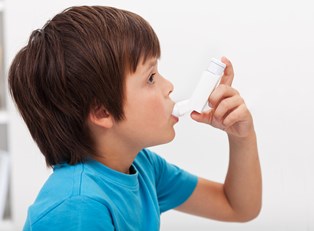Inhaled medications are breathed into the lungs. They are taken to relieve symptoms that cause shortness of breath.
Because they are inhaled, they reach their destination faster than pills, which must be absorbed systemically first. When you take inhaled medication for breathing problems, you get the medicine right where you need it the most, much quicker, and with fewer side effects than oral medications. Two devices used for taking inhaled medications are inhalers and nebulizers. These two devices are compared and contrasted below.
Inhalers
Small enough to fit in one hand or placed in a pocket or purse, inhalers are portable and lightweight. They are quiet, disposable, and affordable too. Another bonus is that taking a puff from an inhaler takes just a few seconds. There are mainly two kinds of inhalers: metered-dose inhalers (MDIs), which produce an aerosol spray that is inhaled and dry powder inhalers (DPIs), which produce a fine powder that is inhaled. MDIs are most commonly used in the United States.
In the 1990’s, metered-dose inhalers came under scrutiny because they contained chloroflourocarbons (CFCs), which are considered ozone-depleting substances. Since then, MDIs have been reformulated to contain new propellants called hydroflouroalkalines (HFAs), which do not harm the ozone layer in the atmosphere.
Operating MDIs correctly requires a decent amount of coordination. Timing the breath and activation of the inhaler just right can be difficult, especially for children and the elderly. When MDIs are used improperly, less than half of the dosage might actually make it to the lungs.
To overcome patient error, valved holding chambers, or spacers, are now recommended for use with MDIs. Spacers are hollow tubes that function as an extension of the inhaler’s mouthpiece. Spacers hold the medicine in suspension and compensate for the lag that can occur between activating a dose from the inhaler and inhaling it.
Nebulizers
Nebulizers are small machines that convert liquid medication into a fine mist that is inhaled through a nose-and-mouth mask or a pipe-like mouthpiece. With a nebulizer, you just squirt a pre-measured vial of medicine into a cup and flip on the switch to take your breathing treatment. These treatments require a little more of your time than inhalers do though, and they may result in more side effects, such as feeling shaky.
A nebulizer usually takes 10-15 minutes. Many nebulizers can be loud, so treatments cannot be taken as discreetly as with inhalers. The noise can be frightening for children, making them less compliant during treatments. Another downside is portability since nebulizers must be plugged in or run on charged batteries.
Choosing Between Inhalers and Nebulizers
Many physicians and several studies claim that treatment with an MDI and spacer can be just as effective as a breathing treatment given with a nebulizer. But many patients prefer their nebulizers over inhalers because the nebulizers do not require the coordination that inhalers do. Others claim they just get a better treatment than with an inhaler. Claims aside, the fact is that in acute-care settings, breathing treatments are still predominantly given through nebulizers.



